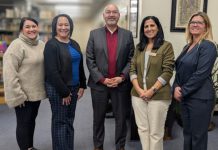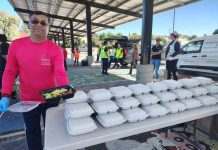Trustees approved spending more than $600,000 on arts education,
including about $300,000 for a beefed up elementary school music
programs.
Gilroy – Trustees approved spending more than $600,000 on arts education, including about $300,000 for a beefed up elementary school music programs.
At its June 7 board meeting, the Gilroy Unified School District board of trustees approved roughly $600,000 for elementary, middle and high schools to institute or boost art programs. The bulk of the money comes from the state while contributions from the district and the Connell Family Music Fund make up the rest.
“In the six, seven years I’ve been on the board, this is the most comprehensive presentation I’ve seen on the performing arts,” trustee Jaime Rosso told members of the visual and performing arts committee who brought the resolution before the board.
The plan included enhancements of arts education at every level of education.
In particular, it put about $300,000 toward designing and organizing a music curriculum for third- through fifth-grade classes. About $125,000 of this is ongoing funds from the district and the Connell grant meant to provide supplies, hire a music coach that would teach children and train teachers to teach music, and provide bonuses for one teacher at each school that would oversee implementation of the plan.
Committee members hoped the music coach would establish a program in three years that teachers could run on their own. At that point, the coach would be replaced with a visual arts coach who would set up a similar program in three years. In turn, this person would be replaced by performing arts and dance coaches, who would do similar three-year stints.
“In an effort to create a sustainable plan, we felt it was important to begin with one art form in the first year and then subsequently layer upon that foundation with other art forms in the following years,” said Katie Larsen, a third-grade teacher at Antonio Del Buono Elementary School and committee member.
Middle schools received more than $120,000, including $33,000 in annual funds to purchase band instruments and sheet music, install a kiln and expand the visual arts program.
Likewise, Gilroy High School was allocated about $100,000 in one-time funds to install a lighting system in the cafeteria for performances and replace instruments and visual arts equipment, among other projects. In addition, it will get about $40,000 each year to take field trips to art museums and hire guest artists to lead classes.
The funds are aimed at “replenishing, refurbishing, augmenting and enhancing the programs that already exist,” said Phil Robb, high school choir director and committee member.
In addition to improvements at schools, the plan calls for a part-time district coordinator to make sure the plan is carried out.
“This individual will coordinate the implementation of the each plan and the development of an art curriculum, oversee the management of the resources, coordinate professional development and evaluate the effectiveness of our arts program,” said Marilyn Ayala, district director of curriculum and instruction and committee member.
The position and the district expenditure represent new life in Gilroy arts funding, which has been whittled away in the past decade, Robb said.
“Tonight we’re looking at the possibility of a new day,” he said at the June meeting. “With this money from the state and the Connell gift, we have an opportunity to turn things around.”
Trustees expressed enthusiasm for the arts, but indicated that a limited budget restricted funding arts electives disproportionately compared to academic subjects, such as math and English.
“Our challenge as a board and as a district is to find that balance, that the students get quality instruction the in the core subjects as well as in electives,” trustee Rhoda Bress said.
Part of the effort to find this balance is hampered by the two state standardized tests, for which schools spend months preparing, trustee Javier Aguirre said.
“I think while we appreciate these tests, sometimes it takes away from the priorities of educating all kids and providing them with other opportunities,” he said.
While it cannot replace the time taken to prepare for tests, the resolution is a step toward providing these alternative artistic opportunities, Aguirre said.
“It may be through this program that we discover our next great artist,” he said.














